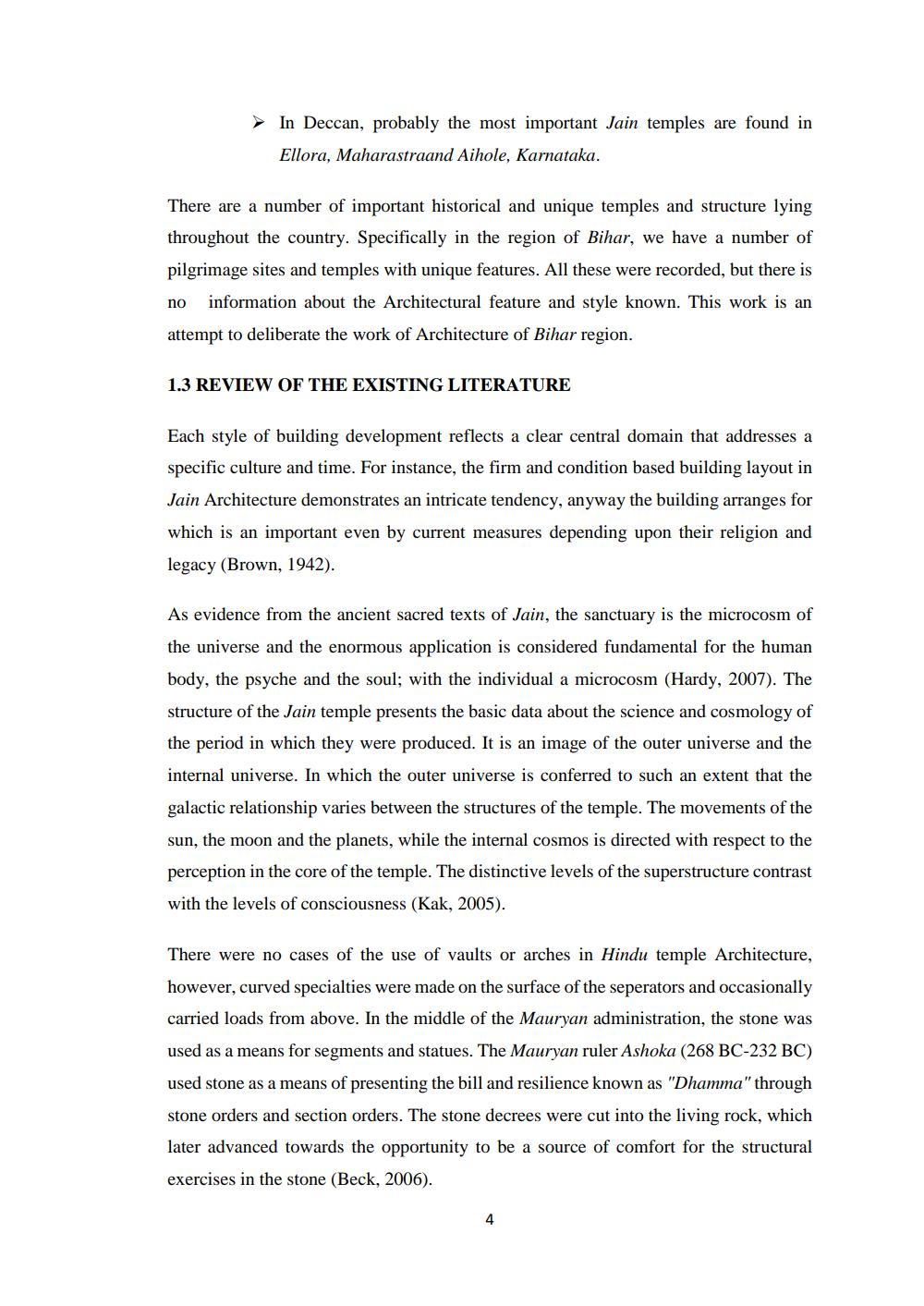________________
In Deccan, probably the most important Jain temples are found in Ellora, Maharastraand Aihole, Karnataka.
There are a number of important historical and unique temples and structure lying throughout the country. Specifically in the region of Bihar, we have a number of pilgrimage sites and temples with unique features. All these were recorded, but there is no information about the Architectural feature and style known. This work is an attempt to deliberate the work of Architecture of Bihar region.
1.3 REVIEW OF THE EXISTING LITERATURE
Each style of building development reflects a clear central domain that addresses a specific culture and time. For instance, the firm and condition based building layout in Jain Architecture demonstrates an intricate tendency, anyway the building arranges for which is an important even by current measures depending upon their religion and legacy (Brown, 1942).
As evidence from the ancient sacred texts of Jain, the sanctuary is the microcosm of the universe and the enormous application is considered fundamental for the human body, the psyche and the soul; with the individual a microcosm (Hardy, 2007). The structure of the Jain temple presents the basic data about the science and cosmology of the period in which they were produced. It is an image of the outer universe and the internal universe. In which the outer universe is conferred to such an extent that the galactic relationship varies between the structures of the temple. The movements of the sun, the moon and the planets, while the internal cosmos is directed with respect to the perception in the core of the temple. The distinctive levels of the superstructure contrast with the levels of consciousness (Kak, 2005).
There were no cases of the use of vaults or arches in Hindu temple Architecture, however, curved specialties were made on the surface of the seperators and occasionally carried loads from above. In the middle of the Mauryan administration, the stone was used as a means for segments and statues. The Mauryan ruler Ashoka (268 BC-232 BC) used stone as a means of presenting the bill and resilience known as "Dhamma" through stone orders and section orders. The stone decrees were cut into the living rock, which later advanced towards the opportunity to be a source of comfort for the structural exercises in the stone (Beck, 2006).




